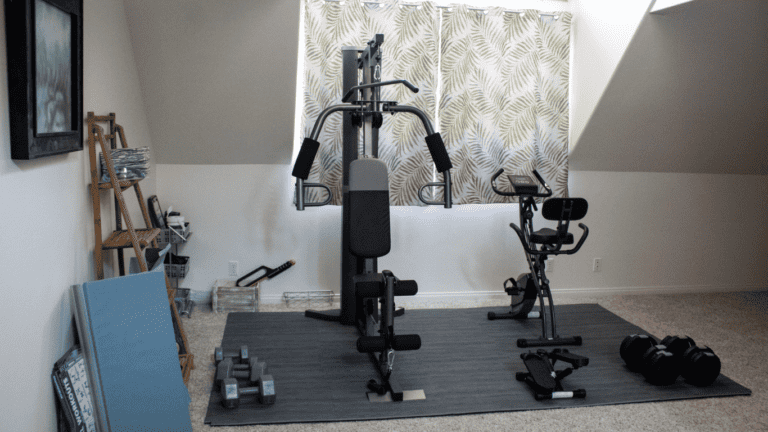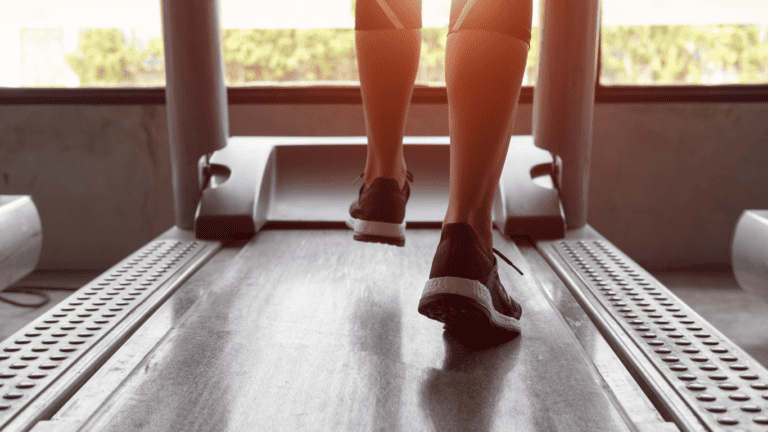Shine Bright: How to Clean a Barbell for Peak Performance

Do you recall the last time you performed maintenance on your barbell?
Consistent upkeep is vital to ensure that your barbell remains in optimal condition and facilitates maximum performance. Failing to maintain your barbell can result in a weakened grip, corroded equipment, and even hindered gains.
To attain the utmost results from your training, you must begin to attend to your equipment.
In this post, we’ll go through the critical steps of how to clean a barbell, so you can keep your gear shining bright and working at its best. Are you ready to learn the secrets of proper barbell maintenance?
Let’s get started!
Cleaning Materials
Cleaning your barbell effectively requires suitable materials and tools. Here’s a list of essential items and tips on where to find them:
Cleaning Solution
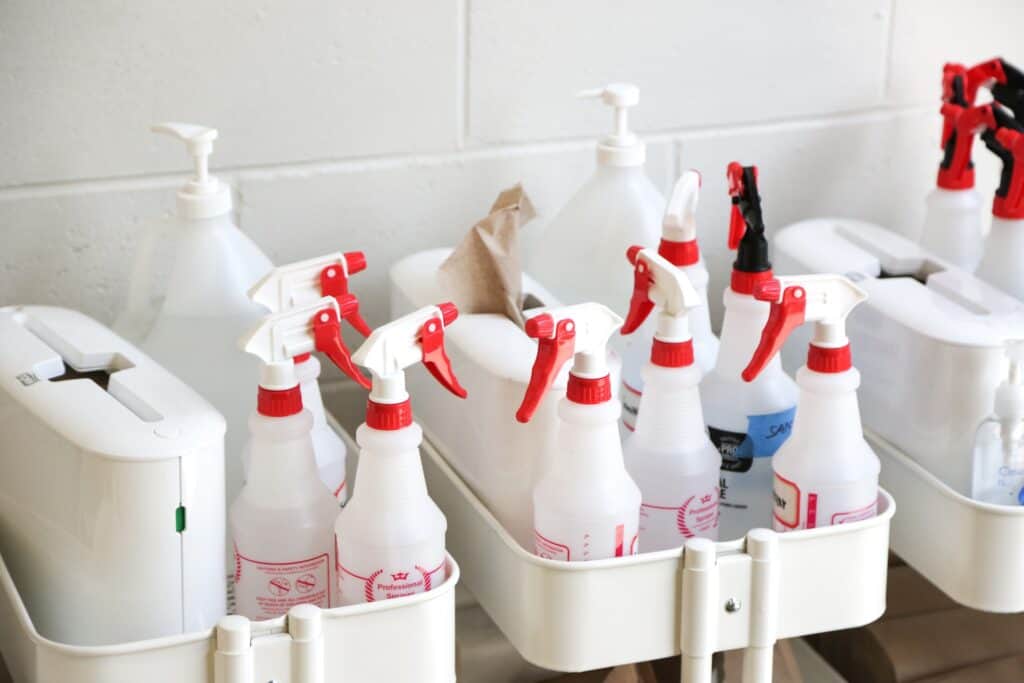
Regular cleaning is crucial to maintain your barbell’s longevity and ensure safe and effective workouts. Commercial gym equipment can be cleaned using specially formulated sprays or DIY natural solution of warm water and mild dish soap.
For tougher grime, a baking soda and vinegar soak works wonders. Don’t neglect the cleanliness of your home gym equipment – give your barbell some TLC with a gentle cleaning solution.
Nylon Bristle Brush
A nylon bristle brush is a gentle yet effective tool for this purpose. Its soft bristles can safely scrub the knurling and other parts of the barbell, removing dirt, sweat, and grime.
Compared to brass brushes, nylon brushes are more gentle on the barbell’s surface. With a comfortable grip and easy usability, the smooth texture of the nylon bristle brush makes it a convenient choice.
Microfiber Cloths or Towels
When it comes to keeping your Olympic barbell in top condition, there’s nothing like a trusty microfiber cloth. These versatile cloths are a great choice for not only cleaning but also drying your barbell post-workout, thanks to their superb absorbency and soft texture.
Whether you’re looking to remove dust or sweat marks, a good-quality microfiber cleaning cloth can help you keep your barbell looking new for longer.
Barbell Lubricant
Barbell lubricant is often overlooked, but it plays a crucial role in ensuring a smooth sleeve rotation, preventing rust, extending lifespan, and ensuring safety during lifts.
To use it properly, check the recommended lubricant type by your barbell manufacturer and follow their application instructions. Apply a small amount of lubricant to the sleeves and rotate them for even distribution. This will prevent squeaking noises and keep your barbell running smoothly.
Snap Ring Pliers
Having a reliable set of snap ring pliers is highly recommended for barbells with snap rings instead of end caps. These pliers are invaluable when it comes to replacing worn-out or broken snap rings, guaranteeing the safety and stability of your barbell.
Rubbing Alcohol
Rubbing alcohol is an essential cleaning agent for your barbell. Its disinfectant properties can effectively remove bacteria and germs from your equipment, reducing the risk of infections.
Use 70% isopropyl alcohol to clean your barbell. Simply spray it on a clean cloth or paper towel and wipe down the areas that come in contact with your hands or body during workouts.
Gloves
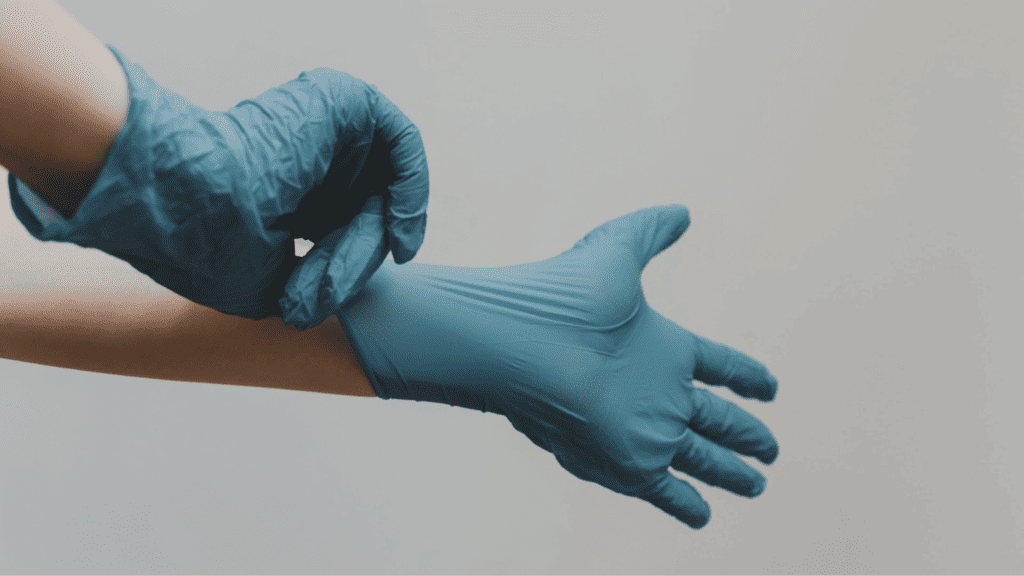
To protect your hands from cleaning agents and debris, it’s a good idea to wear gloves while cleaning your barbell.
Choose gloves made of durable materials like rubber or neoprene that can withstand exposure to strong chemicals and abrasives. Don’t forget to wash and disinfect your gloves regularly to prevent cross-contamination.
Safety Glasses
Using safety glasses such as 3m safety glasses can shield your eyes from any potential splashes of cleaning agents.
Make sure to always wear safety glasses when handling strong chemicals, and remember to replace them if they become scratched or damaged.
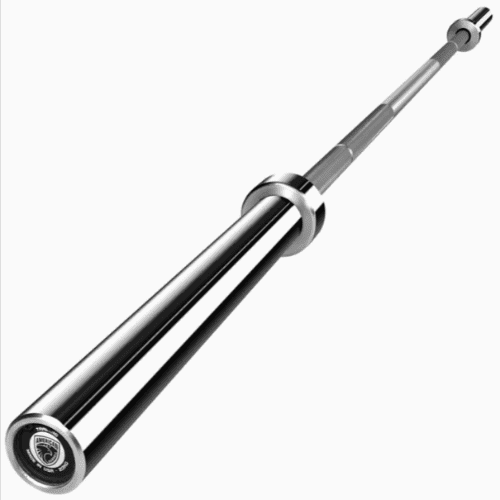
American Barbell
- Application: Olympic Weightlifting, Weightlifting, Competition
- Bushing System
- Center knurl: No
- Shaft: Hard Chrome Coating
- Sleeve: Precision Ground Steel with a Hard Chrome Coating
- IWF Specification
- Made in USA
- Warranty: Limited Warranty
Small Bucket or Container
Using a small bucket or container to hold your cleaning solution can help prevent spills and make the cleaning process more efficient.
Choose a container with a lid to store your cleaning solution for future use. This will also prevent evaporation and keep your solution effective for longer periods.
Old Newspaper
To safeguard your floor from cleaning solutions, consider using old newspaper sheets. Simply place the newspaper under your barbell while cleaning to catch any spills or drips. This simple step not only makes clean-up easier but also prevents potential damage to your flooring.
Regular cleaning is crucial to maintain your barbell’s longevity and ensure safe and effective workouts
Disassembling Your Barbell
The first step of how to clean a barbell is taking it apart. This not only allows you to clean each piece thoroughly but also helps you inspect for any signs of wear and tear. Follow these simple steps to disassemble your barbell:
- Step 1: Set up a clean workspace and gather all the necessary cleaning supplies.
- Step 2: Remove the collars from the ends of the barbell, if applicable.
- Step 3: To begin, use a pair of pliers to carefully unscrew any snap rings or clips located on each end of the barbell. These snap rings hold the washer and loading sleeve in place, so removing them is necessary. However, it’s important to note that removing the snap rings may cause damage to the chrome paint, resulting in an unattractive appearance.
- Step 4: Carefully slide off the weight plates from each end of the barbell.
- Step 5: Use a clean cloth to wipe down each piece and eliminate dirt or grime. For the knurling and sleeves, remove chalk or debris with a brush or cloth.
- Step 6: For a deeper clean, use soap and water or a mild detergent on a soft brush to scrub off any stubborn debris. Rinse and dry thoroughly.
- Step 7: Polish the barbell with stainless steel or chrome cleaner, depending on the specific material.
- Step 8: Inspect each piece for signs of wear and replace them if necessary to ensure safety during use.
Remember, different barbells require different cleaning approaches, so make sure to research the best method for your particular barbell type. Keep your home gym or garage gym clean and in pristine condition with a regular barbell cleaning routine.
Tips for cleaning different types of barbells
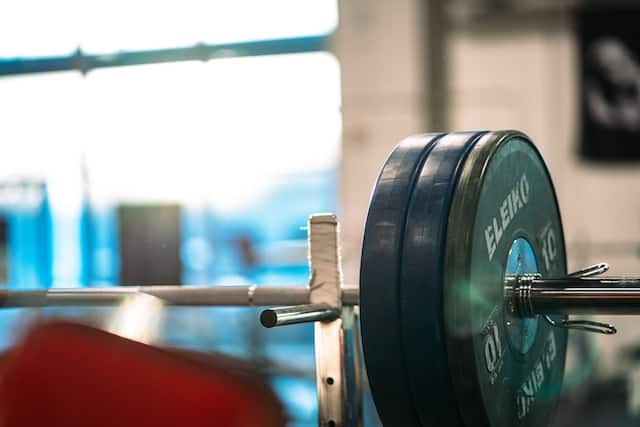
Every barbell is unique, and crafted from different materials. It is crucial to familiarize yourself with your specific barbell before undertaking the cleaning process. Here are some valuable tips for cleaning various types of barbells:
- Stainless Steel Bar: Use a mixture of warm water and mild detergent to clean the bar using a soft cloth or brush. Avoid using abrasive cleaners as they can damage your stainless steel barbells.
- Chrome Barbell: Wipe down with a damp cloth and dry thoroughly. For tougher stains, use a chrome cleaner following the manufacturer’s instructions.
- Black Oxide Bar bell: Avoid using water as it can cause the black oxide finish to rust. Instead, use a dry cloth or mild solvent to wipe down the bar.
- Cerakote Barbell: Use soap and water or a mild detergent on a soft brush to clean the bar. Rinse and dry thoroughly.
Maintenance Tips
Regularly cleaning your barbell is important, but there are a few additional steps you can take to keep it in top condition:
- Storage: Ensure the longevity of your barbell by storing it in a dry location, shielded from moisture and extreme temperatures. For an efficient use of space in your garage gym or home gym, I suggest opting for horizontal storage.
- Lubrication: Every few months, lubricate the sleeve of your barbell with a light oil or silicone spray. This will help prevent rust and ensure smooth movement. Make sure to wipe off any excess oil before using the bar.
- Rotating Plates: Rotate your plates regularly to distribute weight evenly and prevent uneven wear on the sleeves.
- Protective Coatings: Consider adding protective coatings such as tape or rubber bumpers to high-wear areas, such as where the bar rests on a rack or during deadlifts. This will help extend the life of your barbell.
- Inspections: Regularly inspect your barbell for any signs of wear or damage. If you notice any issues, address them immediately to prevent further damage and potential injury.
- Proper Use: Finally, make sure to use your barbell for its intended purpose and within its weight limit. Avoid dropping the bar or using it on rough surfaces as this can cause damage. Also make sure to avoid using excessive amounts of chalk, as this can cause buildup and damage to the finish over time.
By following these simple maintenance tips, you can extend the lifespan of your barbell and ensure optimal performance during your workouts.
Remember to always follow the manufacturer’s instructions for specific cleaning and maintenance guidelines for your particular barbell model.
Rust Removal Procedure for Your Barbell
Getting rust build up on your barbell can be a nightmarish experience. Not only does it affect the aesthetics of your equipment, but it can also lead to potential safety hazards. Therefore, it’s important to regularly check for and remove any rust on your barbell. Here is a simple step-by-step procedure to effectively remove rust from your barbell:
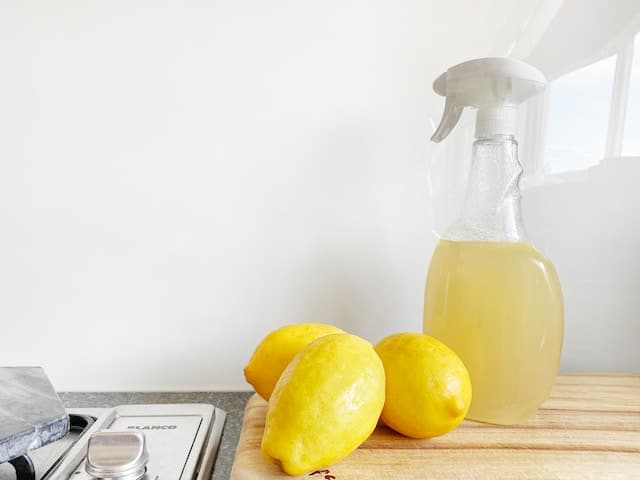
- Gather materials: For this procedure, you will need a stiff brush, a rust removal solution (such as white vinegar or lemon juice), and a microfiber cloth. White vinegar is more effective for removing tough rust, while lemon juice is gentler and better for maintaining the barbell’s finish.
- Prep the barbell: Use the stiff brush to remove any loose debris or rust flakes from your barbell. Then, wipe down the entire bar with a damp microfiber cloth to remove any remaining dust or particles.
- Apply solution: Dip your brush into the solution and scrub the affected areas of your barbell. Be sure to cover all rusty spots thoroughly.
- Let it sit: Allow the solution to sit on the barbell for about 10-15 minutes, depending on the severity of the rust build-up.
- Scrub again: After letting it sit, use the brush to scrub the area again. This will help loosen any remaining rust.
- Wipe clean: Use a clean microfiber cloth to wipe away the solution and any loosened rust. Repeat this step until all the rust is removed.
- Dry thoroughly: Once all the rust is removed, use a dry microfiber cloth to wipe down the barbell and remove any excess moisture. It’s important to make sure the barbell is completely dry to prevent any future rusting.
- Apply protective coating: To prevent future rust build-up, you may choose to apply a protective coating on your barbell. This can be done using products specifically made for this purpose or by simply rubbing a light layer of oil (such as mineral or coconut oil) onto the bar.
- Store properly: Proper storage is key to preventing rust on your barbell. Make sure to keep it in a dry place, away from any moisture or humidity.
- Regular maintenance: To ensure that your barbell stays rust-free, make it a habit to clean and inspect it regularly. This will help catch any signs of rust early on and prevent extensive damage.
- Consider professional cleaning: If your barbell has significant rust build-up or if you’re unsure about how to properly clean it, consider taking it to a professional cleaner who specializes in gym equipment. They will have the necessary tools and expertise to effectively remove rust and keep your barbell in top condition.
- Don’t neglect other equipment: When you’re directing your attention to the barbell, it’s important not to overlook the regular cleaning and maintenance of other gym equipment, including weight plates, storage stands, and barbell collars. Not only will this help keep them in optimal condition, but it will also prevent any possible rust from spreading to your barbell.
- Prevention is key: The best way to deal with rust on your barbell is to prevent it from happening in the first place. Make sure to wipe down your barbell after each use, keep it properly stored, and regularly clean and maintain it.
- Final thoughts: Rust on a barbell may seem like just a cosmetic issue, but it can affect its performance and lifespan. By taking proper care of your barbell and following these tips, you can prevent rust build-up and ensure that your equipment lasts for years to come.
Conclusion
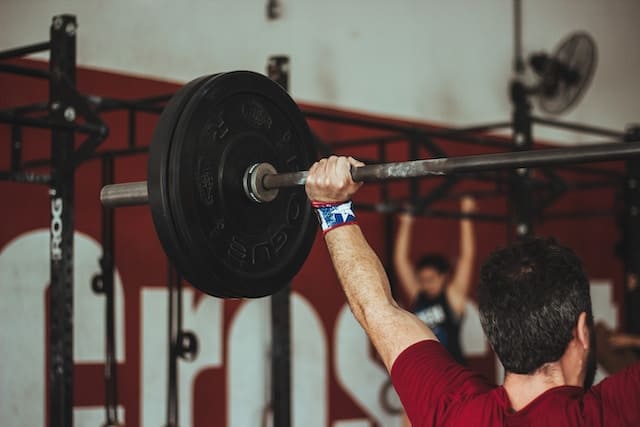
One of the most essential things you can do for your home gym setup is to clean your barbell. As detailed in our complete guide, there are several supplies needed, but the payoff is worth the effort.
Your barbell will last longer, perform better, and help you avoid injuries. Don’t underestimate the significance of barbell cleanliness in achieving peak performance. We encourage you to implement the cleaning process and maintenance tips for a more sanitary and effective workout experience.
Remember, a well-maintained barbell will not only make your workouts more effective but will also motivate you to achieve your fitness goals.
Don’t wait any longer; take the necessary steps to clean your barbell now and experience the benefits for yourself!



